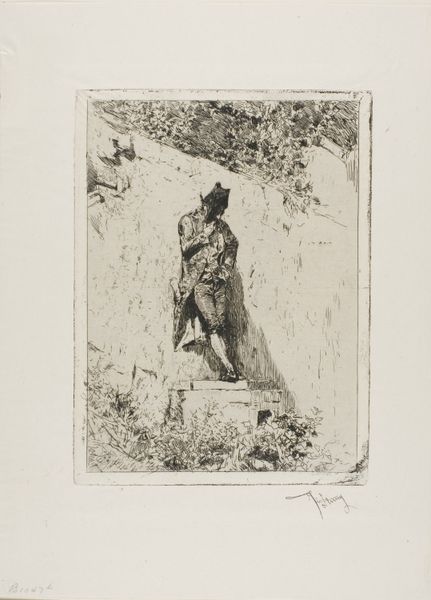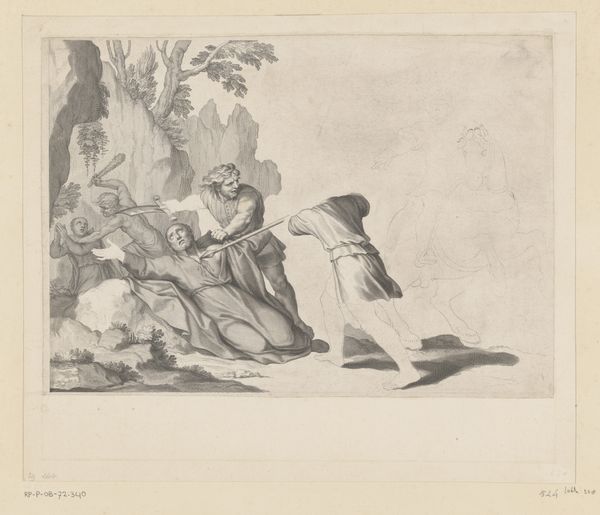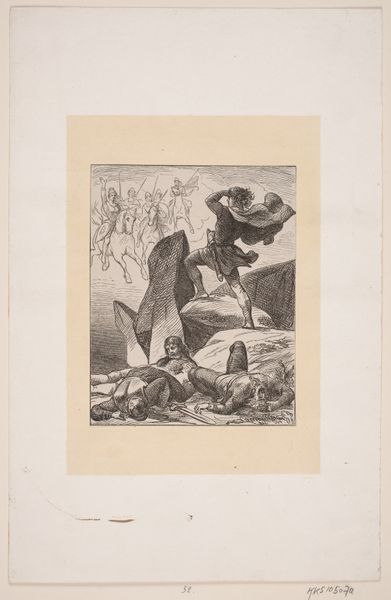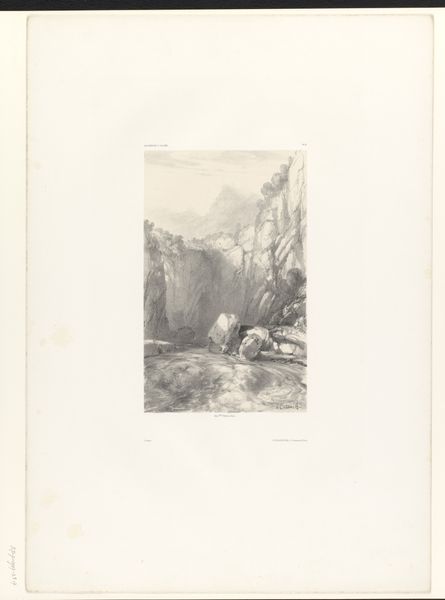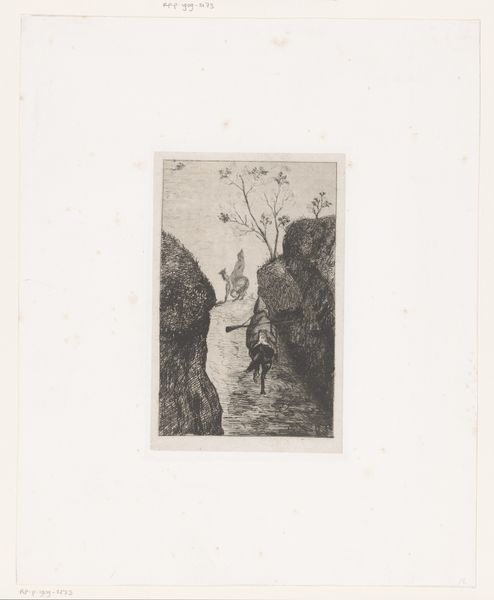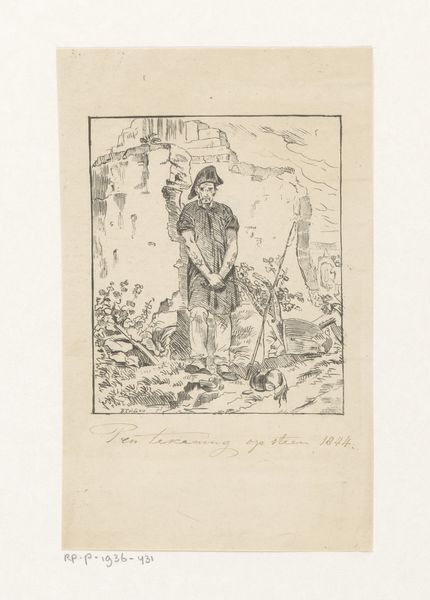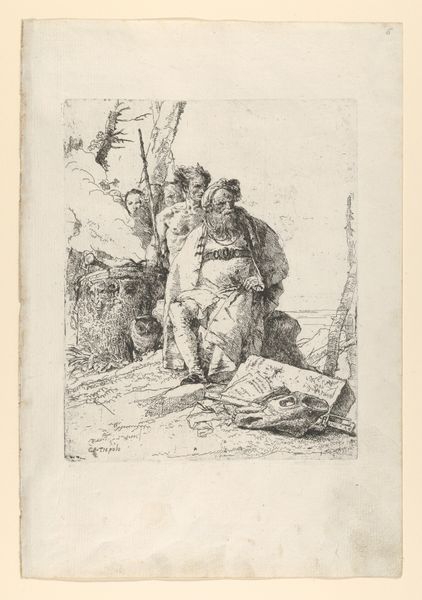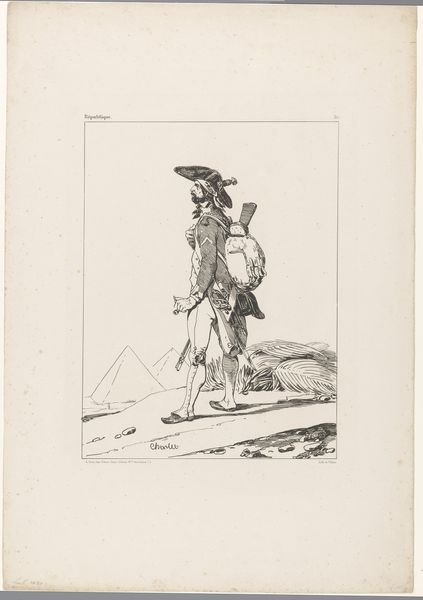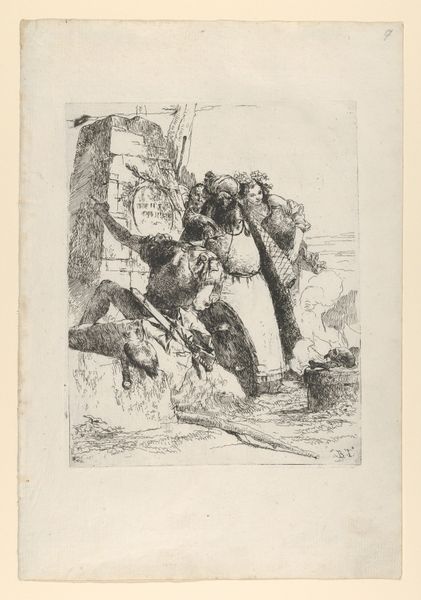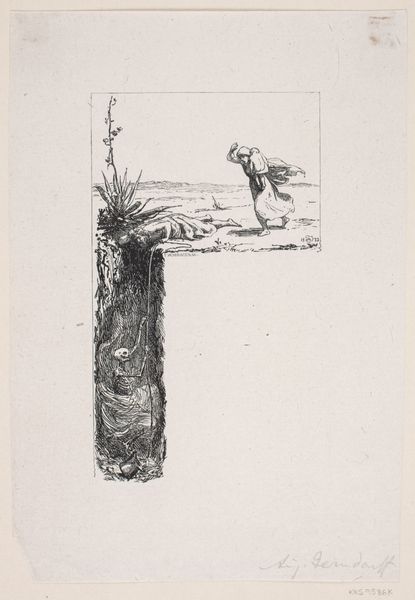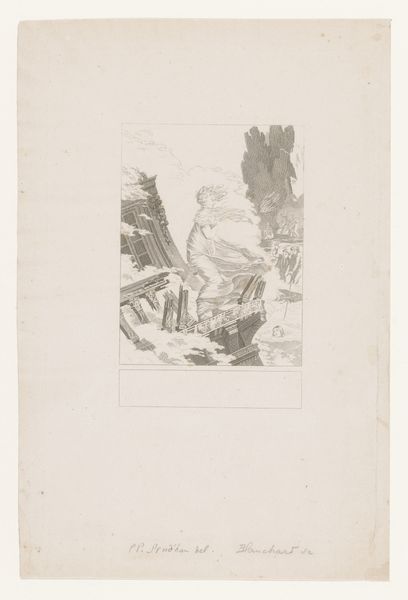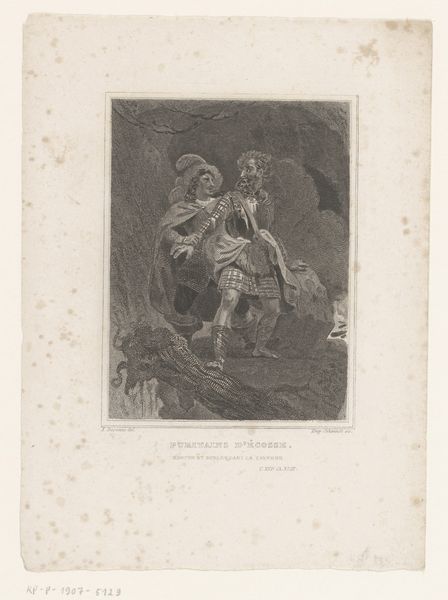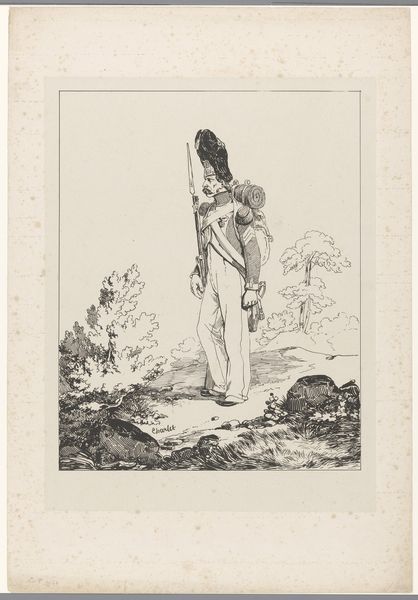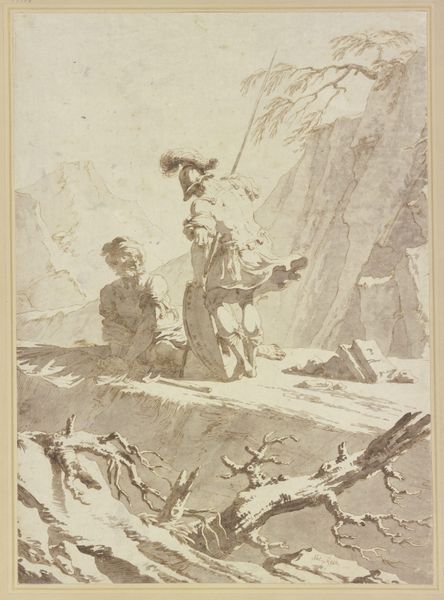
Sterbender Wanderer, from the series Radierte Skizzen 1870 - 1920
0:00
0:00
drawing, print, etching
#
drawing
# print
#
etching
#
landscape
#
figuration
#
symbolism
#
nude
Dimensions: Image: 12 1/8 × 6 7/8 in. (30.8 × 17.5 cm) Sheet: 15 7/8 × 10 7/8 in. (40.3 × 27.6 cm)
Copyright: Public Domain
Curator: What a bleak, arresting scene. The landscape itself seems to be actively crushing the figure. Editor: That's precisely the power of Max Klinger's "Sterbender Wanderer," or "Dying Wanderer," from his "Radierte Skizzen" series, created between 1870 and 1920. It's an etching, currently residing here at the Metropolitan Museum. Notice the figure, seemingly nude, collapsing against a jagged rock formation, watched over by an ominous bird. Curator: I'm immediately struck by the material contrast. The delicacy of the etched lines somehow intensifies the ruggedness of the rocks. It's an impressive feat of craftsmanship. The sheer labour involved, translating such a weighty scene into this medium... Editor: It's hard to escape the feeling that the bird represents some form of impending doom. Klinger often used such symbols, drawn from classical mythology and contemporary societal anxieties. This was a time of great upheaval and change. The wanderer motif itself spoke to the anxieties of displacement and rootlessness, all wrapped into the symbolist movement's wider concern with emotion. Curator: Displacement certainly seems key here. Look at the bareness of the wanderer's body against that of his environment – is Klinger trying to evoke our most primitive self through the act of printmaking itself, emphasizing humanity’s essential materials as bound to nature and mortality? I'm interested in the accessibility of prints during this time - it suggests that these ideas, this bleak vision, was reaching a relatively broad audience. Editor: And those anxieties weren't limited to the artist or his immediate circle. There's a real connection here to the rise of industrialisation and the breakdown of traditional social structures. What was the role of the artist in a changing world, if not a "wanderer"? Was their art actually creating tangible and political change? That same question is constantly being grappled with now. Curator: A sentiment certainly felt to this day. It seems this "wanderer" might still be trying to reach solid ground after all. Editor: Yes, indeed. An unsettling piece and well worth contemplation regarding artistic production.
Comments
No comments
Be the first to comment and join the conversation on the ultimate creative platform.
